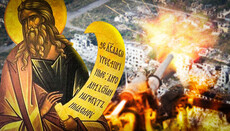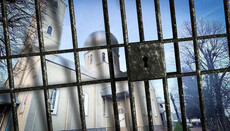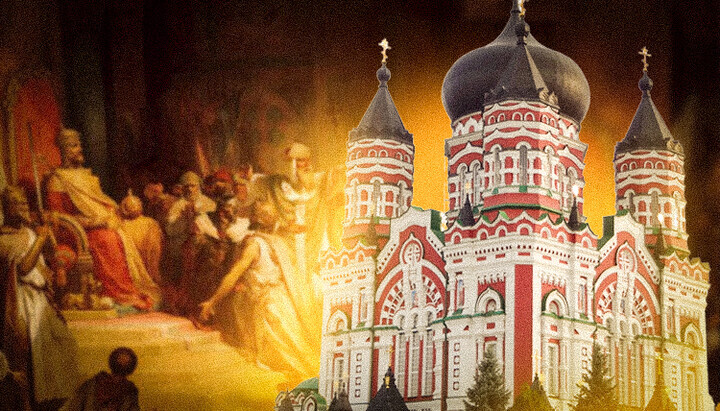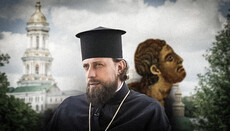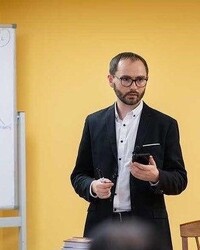History of Renovationism and SLC: strange coincidences
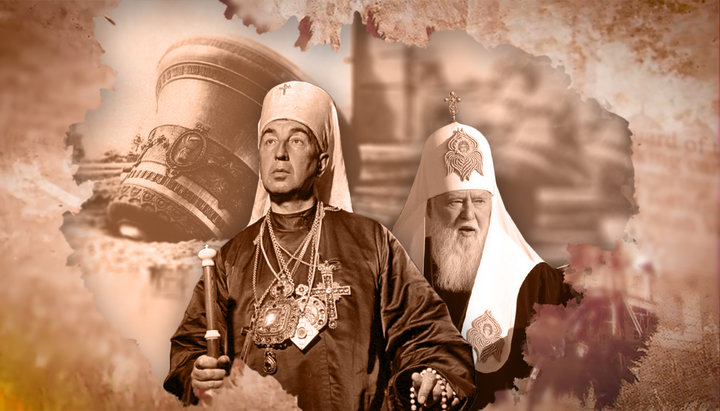
It is apparent that Ukrainian authorities are going down the same road as Bolsheviks. This is very clearly proven by their attempts to create a “pocket church”.
“History is a teacher of life,” said Cicero. After millennia, V. Kliuchevsky objected to the great speaker with a subtle humor: "History is not a teacher but a guard: it teaches nothing but severely punishes for not learning its lessons."
Yes, unlearned lessons of history often become a sentence. This is especially true of those who are the locomotive of history – rulers. It never fails to suprise me how mirrored eras are and how similarly the authorities, separated by tens or hundreds of years, choose to act.
Just a year ago, we recalled the centenary of the February Revolution of 1917. This year was also marked by an important event in the life of the Church, which then passed almost unnoticed: on 7 March 1917, the All-Russian Union of Democratic Orthodox Clergy and Laity was founded in Petrograd, which became the cradle of the famous modernist movement in Russian Orthodoxy: Renovationism. The Bolsheviks-created renovationist “church” became the main ram against Russian Orthodoxy.
Alliances with authorities: renovators with Bolsheviks / supporters of Tomos with nationalists
Alas, one cannot but come to believe that today the Ukrainian authorities are moving along the same rails as their ideological predecessors, the Bolsheviks. This is very clearly expressed in their attempts to create a “pocket church” that would serve the interests of the state. For the Bolsheviks at the beginning of the 20th century, this structure was the Renovationist "church", for the current Ukrainian government – their actively campaigned Single Local Church.
In this article we will draw some parallels between the actions of the authorities of the 1920s and our time.
First of all, we emphasize that when we say “Renovators”, we mean the lobbyists of the revolutionary government.
In the overwhelming majority, all the leaders of the Renovationist schism were merely a tool in the hands of the Soviet government. The “Renovationism” project was initially supported by the Bolsheviks, and served as an instrument of struggle against the canonical Church.
From the Secretariat of the Central Committee of the Russian Communist Party to all Provincial Committees of the RCP, telegrams were sent which said about the need to support the renovationists. The State Political Administration (GPU in Russian) put pressure on the legitimate hierarchs in order to secure their recognition of the Supreme Church Administration and the “Live Church”. Repressions were launched against the canonical clergy.
Isn’t it the same how the SLC is being created today in Ukraine? Aren’t the Ukrainian authorities using the SLC as a weapon against the canonical Church on the territory of Ukraine? For example, we can witness total inaction of the state when schismatics commit raider seizures of the UOC temples or when the UOC bishops and priests get subjected to pressure and harassment.
It is also remarkable that the renovationist movement of the 1920s is considered only in line with Bolshevik ideas and never beyond them.
Besides, the creation of the Single Church today is also initiated by nationalist groups. The idea of the emergence of an autocephalous "church" in Ukraine has always been part of the Ukrainian nationalist ideology.
By the way, the Ukrainian Autocephalous Orthodox Church was created namely under the influence of the renovationist ideas. Recall that the UAOC originated after the February Revolution of 1917 as a nationalist movement. Pro-active Ukrainian patriots advocated the separation of a number of eparchies of the South of Russia from the Russian government and at the same time from the Orthodox Russian Church. One of the leaders of the movement was Protopriest Vasily Lipkovsky, a zealous Ukrainophile. Upon the return of the Petliura army to Kiev on 5 May 1920, representatives of the All-Ukrainian Orthodox Council and the activists of the Ukrainian nationalist movement proclaimed the UAOC — the Ukrainian Autocephalous Orthodox Church. The Rada issued a resolution in which the position of the Orthodox episcopate was recognized as reactionary. The canonical bishops were declared enemies of the Ukrainian people for their being in communion with the Moscow Patriarchate and Patriarch Tikhon of Moscow and All Russia.
“The Kiev episcopate, being a representative of the Moscow spiritual authority, constantly decelerating the nationalist Ukrainian church movement, excommunicating priests, turned out not a good pastor, but an enemy of the Ukrainian people and therefore, departed from the Ukrainian Church,” declared the All-Ukrainian Orthodox Church Council.
How much it resembles today's events! UOC is not the Church! — our rulers herald, imputing us a sin that we are spiritually related to Russian Orthodoxy and do not curse Moscow as someone would like us to.
From 1922 to 1926, Renovationism was the only Orthodox church organization, officially recognized by the revolutionary state authorities of the RSFSR (the second organization of that ilk was the Gregorian Interim Supreme Church Council which emerged in 1926).
Currently, the authorities are also pushing everybody to declare the UOC illegal, non-canonical, to change its name and take its property away. For example, Mikhail Denisenko (“Patriarch Filaret”) declared to the European Parliament as far back as May of this year that after receiving he Tomos on autocephaly, the UOC would be called the Exarchate of the Russian Church in Ukraine. According to him, the Kiev-Pechersk Lavra must belong to the new autocephalous church.
Another coincidence. Today in Ukraine there are several schismatic churches that are conflicting but unanimous in only one thing – their hatred toward the canonical Church.
Hatred towards the canonical Church
Renovationism in the initial period of its existence was also not a clearly structured movement — among other things, the renovationist structures directly clashed with each other. Having broken up inside, all the renovation groups (there were three main ones) were fighting for power in the Supreme Church Administration, while resorting to the help of the GPU, which from the very beginning of the split, in fact, functioned as a conductor for all its leaders.
It is indicative that our UOC KP and the UAOC today fail all the time to convene a “unification council”, although they have been determined to do it for a long time. Recently, the Primate of the UAOC, Makariy Maletich, declared that Filaret “responds with anger” to them, and they cannot come to common ground on the unification matter. According to the apt remark of political expert Elena Dyachenko, we have “a terrarium of friends,” in which “indicators of spirituality are going off-scale”.
Another coincidence: due to the absence of sufficient forces to establish "their own truth," some organizations, and individuals who had claims to the canonical Church, would pass to the temporary opposition vis-à-vis the official Church. It happens today just like it was a hundred years ago.
For example, at the Local Council of 1917-1918, supporters of the “renewal” were in the minority and, therefore, switched to semi-undercover activities. In the early 20s, the Bolshevik leaders (primarily L. D. Trotsky) “remembered” about them. It was decided to “mobilize” the renovationists and push them towards a break with the highest church authority. The Bolsheviks wanted to create with their hands the puppet church authorities in the center and in the provinces controlled by the then regime.
Three representatives of the Petrograd clergy, well known to the Soviet special services – Protopriest Alexander Vvedensky and two of his associates, Priest Vladimir Krasnitsky and layman Yevgeny Belikov – were elected to carry out the “church coup” in Moscow. They announced the creation of the new Supreme Church Administration – the only Orthodox Church organization officially recognized at that time by the RSFSR authorities.
Today, we also see a certain minority among the clergy being hostile towards both the head of the UOC, His Beatitude Onufriy, and the official position of our Church. Like before, there are not only individual representatives inside the canonical Church but also lobbists who can serve as an obedient tool in the hands of the revolutionary authorities in order to attack the Church.
Hate-mongering of mass media
One cannot but mention the support of the renovationists from the media controlled by the revolutionary state. Previously, newspapers were the main artery of the media: the citizens' brains were “washed” through them. For example, on 14 May 1922, an "Appeal to the believing sons of the Orthodox Church of Russia" appeared in "Izvestia" (News), which called for a trial of "the perpetrators of church devastation" and a statement about the termination of the "civil war of the Church against the state”.
Note that the Bolsheviks in their ecclesiastical projects tried to mobilize not only the clergy and practicing believers, but also saw their support in lay people who were far from the church life. This was the very element capable of "charging the church life with revolutionary-religious energy." For example, the lay-type Church Renaissance Union used to belong to the “Living Church” at one time. In its statute, it promised its followers "the widest democratization of Heaven, the widest access to the bosom of the Heavenly Father”.
Now we can see the same thing, only today's goals are more primitive: the army, the language, and our own national Ukrainian faith.
Of particular note is the role of Constantinople and the Local Churches under its authority by the creation of Renovationism.
Intervention of Constantinople
Representatives of the Constantinople and Alexandrian Orthodox missions in Moscow recognized the Renovationists as the Local Orthodox Church in Russia. The representative of the Patriarch of Constantinople and Archbishop of Sinai, Archimandrite Vasily (Dimopulo) and the representative of the Patriarch of Alexandria, Archimandrite Pavel (Kathapodis) participated in councils of the renovationist clergy, and took the Holy Communion with members of the renovationist Synod.
Of course, the intervention of Constantinople only aggravated the already extremely difficult situation of the Patriarchal Church in Russia.
The position of the Patriarchate of Constantinople regarding the Renovationist schism was determined in the 1920s-1930s not so much by ecclesiastic and canonical principles as political factors. Constantinople hierarchs leaned toward those who had the best relations with the Soviet authorities.
Of the four Eastern Patriarchs, only the Antioch did not enter into communion with the renovationists. It is possible that the Antiochian Church at the beginning of the 20th century with the help of the Russian Church was freed from the Greek domination, while the Churches of Jerusalem and Alexandria could not do that.
On 10-18 June 1924, the renovation “Grand Pre-Council Conference of the Russian Orthodox Church” was held in Moscow. Patriarch Gregory VII of Constantinople was elected Honorary Chairman (then he leaned toward the side of the Renovationists under pressure from the Kemalists and was represented in Moscow by Archimandrite Vasily Dimopulo).
The renovators gladly accepted the news of the death of Patriarch Tikhon in April 1925, and several days later they announced the convocation of their second “Local Council”, as a result of which they hoped under the guise of “reconciliation” to finally destroy the canonical Church. An important role in this was assigned to the Patriarchate of Constantinople...
It’s needless to talk about the current role of Constantinople in the creation of the SLC. In fact, it is the Patriarchate of Constantinople that is establishing the next renovation structure in Ukraine.
It is curious that on 5 May 1923, the Renovationist Council legitimized the equivalence of married and unmarried episcopate, and after some hesitations also remarriage of clerics. Constantinople has also recently legalized the remarriage of the clergy.
The renovation "church" brought forth a lot of misfortune but it did not exist for long. When the state ceased to officially support the newly formed, manual renovation church, it fell apart. Finally, it ceased to exist with the death of Renovationist leader A. Vvedensky in 1946. Most clergy, through repentance, returned to the bosom of the Mother Church.
Conclusions
Today, our rulers curse the Communists and carry out “de-communization” ideology through legislative acts. But aren’t they doing the same thing as their predecessors? Do not the words of the Savior, once said to Pharisees, relate also to them, “Woe unto you, scribes and Pharisees, hypocrites! Because ye build the tombs of the prophets, and garnish the sepulchres of the righteous, and say: if we had been in the days of our fathers, we would not have been partakers with them in the blood of the prophets. Wherefore ye be witnesses unto yourselves, that ye are the children of them which killed the prophets. Fill ye up then the measure of your fathers. Ye serpents, ye generation of vipers, how can ye escape the damnation of hell?” (Matt. 23, 29-33)
Let us hope that the contemporary Renovationism will share the fate of its predecessors. And those, who are trying to build today what was once destroyed by God, go against the Lord. History warns them; however, they either do not know history, or deceive themselves, or sin consciously. Yet, in any case, they will have to answer in the face of God.

